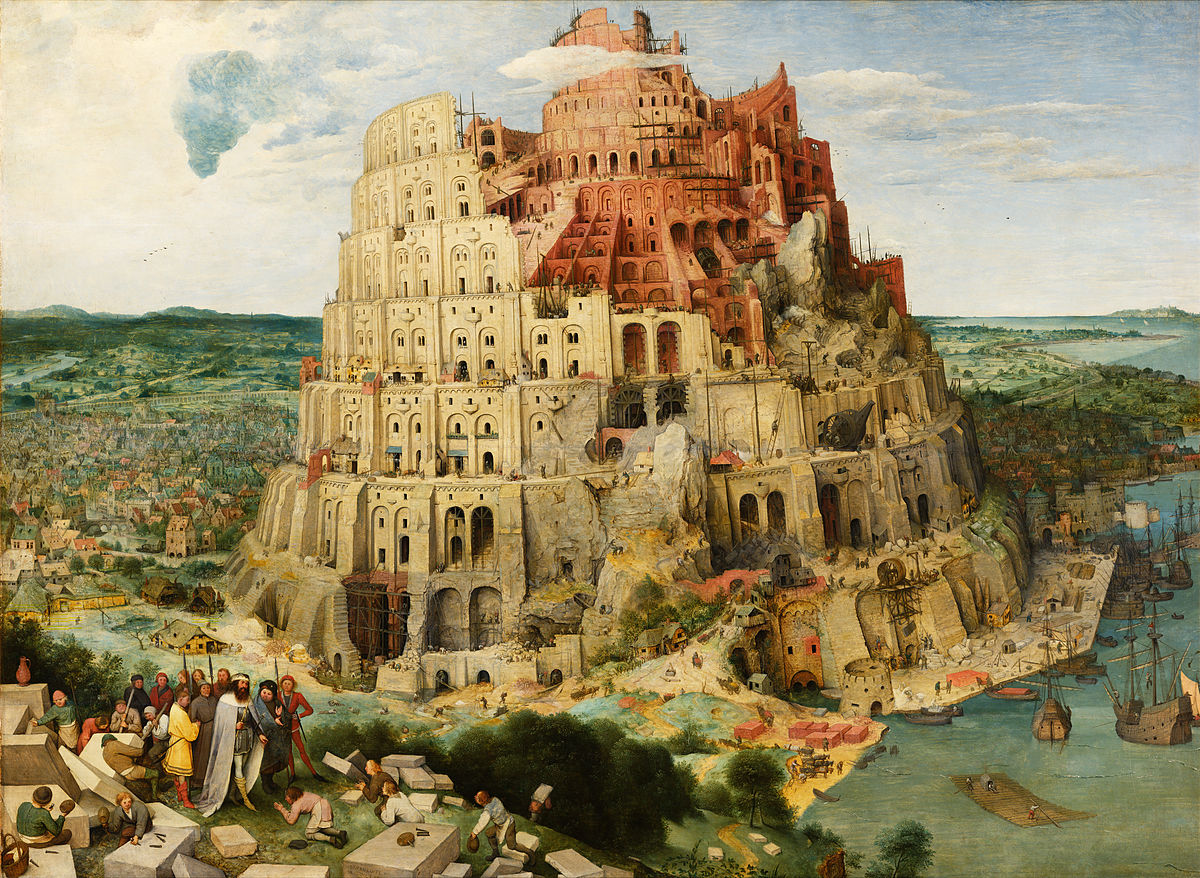For explanation
Below an article [1] from the famous Dr. HA Ironside on the Origin of the Pagan Religions. He sketches the line that runs from Babel to the Roman Church in our time. As background to the theme of this site I think it would be useful to take note.
Here and there I inserted headings (I suspect the original was a speech), added biblical texts and added footnotes.
Nimrod
If we go back from the Scriptures to the beginning of history, we find that the founder of Bab-el, or Babylon, was Nimrod, whose unholy practices we read in the 10th chapter of Genesis. He was the arch-renegade of the patriarchal age. He is typified as a “mighty hunter before the Lord”; “a hunter of the souls of men,” according to the rabbis. He left the presence of the Lord, and wickedly tries to gather a crowd of people behind him. In defiance of God's express command to disperse over the face of the earth, he persuaded his associates and followers to work together in “building a city and a tower that would reach to heaven” (Genesis 11:4).
Some of us learned in childhood that we built a tower to escape to heaven if another flood came. But actually it is a well-known and high tower, which could be seen by all as a temple for those who did not walk in obedience to the word of the Lord. With the same insolence as our modern apostates, they called their city and tower Bab-El, which is "the gate of God." But by the divine judgment it was soon changed to Babel, that is 'confusion'. It bore the stamp of counterfeit from the beginning, for we are told, “And the blocks of clay were for them stone, and the asphalt was for them clay” (Genesis 11:3). Since then, throughout the ages, Babylon has been characterized by imitation of that which is real and true.
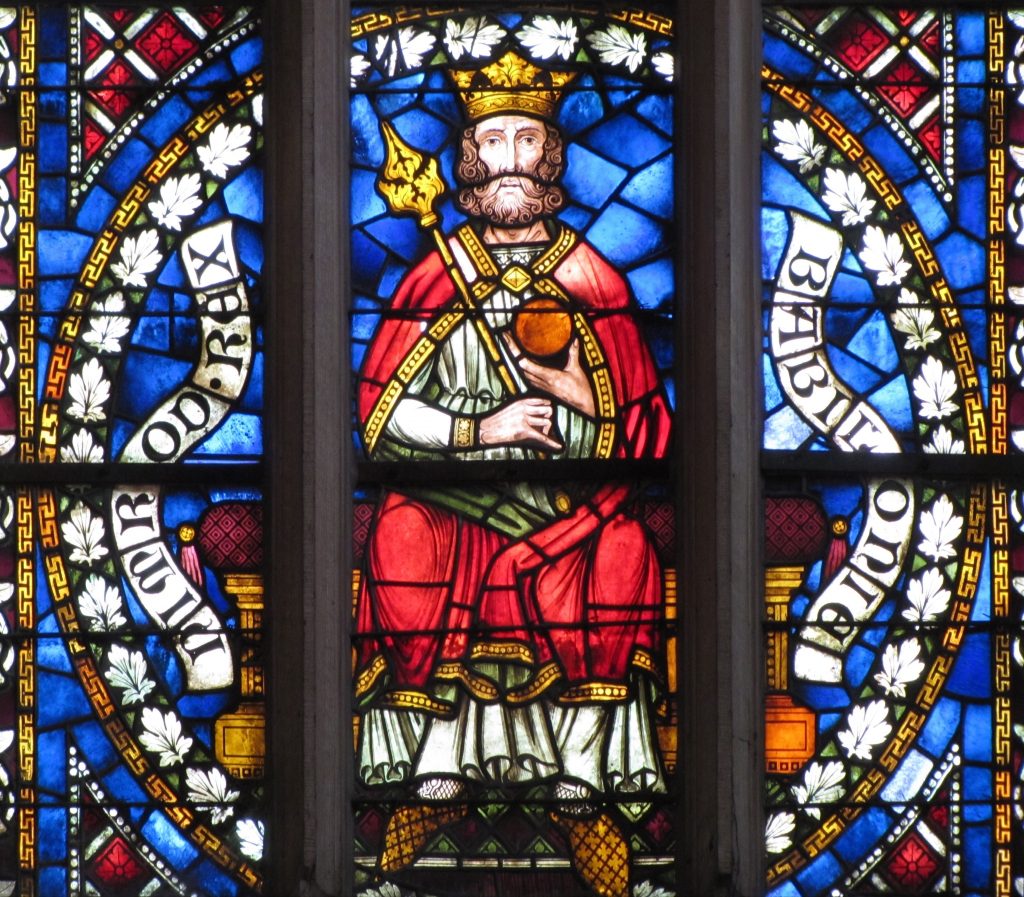
Nimrod, or Nimroud-bar-Cush, as he is called on the (archaeological) monuments, was a grandson of Cham, the unworthy son of Noah, whose character is shown when he discovers his father's shame (Genesis 9:21,22). We know that Noah had carried through the flood the revelation of the true God, for he was a preacher of righteousness, and on several occasions he shows that he had the prophetic gift. Cham, on the other hand, seems to have been too easily influenced by the apostasy brought by the flood, for he shows no signs of self-judgment, but just the opposite.
His name, as spelled on Egyptian monuments, is Khem, and this corresponds to the literal sound of the Hebrew word representing Cham in our Bibles. It means "dark," "darkened," or more literally, "burned by the sun." The name indicates the condition of the man's soul. For what is a sun-burnt person? One who is darkened by light from heaven. Cham had received special grace. He was saved from the flood because of his father's faith, but he abused his privileges and "turned the grace of God into licentiousness" (Jude 1:4). He was actually darkened by the burning rays of light that God was shining on his soul. Thus his conscience was cauterized as with a hot iron, and he became the founder of a race that was apostate from the living God and walked the path of idolatry. They worshipped the creature more than the Creator.
Pavement – the light that darkens
We know something of what this means. Today we speak of people who, as we say, have hardened their hearts to the gospel. They too are darkened by the light, and are often the leaders in apostasy: “If the light that is in you be darkened, how great is the darkness” (Matthew 6:23b). There are many in the world who, with tears in their eyes, listen to the story of the matchless grace of God as revealed in the cross of Christ, but do not take it personally to themselves. They have become hardened in their sins and their seared consciences no longer feel the breath of the Spirit. It is dangerous to mock light from heaven.
But to continue with our theme, Ham was obscured by the light. We know his failure and sin. But when Noah recovered and knew what his son had done to him, he, through the spirit of prophecy, pronounced a curse on Canaan and not on Ham (Genesis 9:18,25-27). Do you wonder about that? I did, too, until I saw that God had already blessed all three of Noah's sons—Shem, Ham, and Japheth (Genesis 9:1). So Noah skips his unworthy son and casts a curse on Canaan, who we may well believe is, as we say, "a spikelet to his raft." Ham fathered a son named Cush, "the black one," and he fathered Nimrod, the apostate leader of his generation.
Semiramis – the woman and her seed
Ancient traditions now help us and tell us that the wife of Nimrod-bar-Cush was the infamous Semiramis, the First[2]. She is known as the founder of the Babylonian mysteries and the first high priestess of idolatry. Thus Babylon became the source of idolatry and the mother of all the Gentiles and every pagan system in the world. The mystery religion that arose there spread in various forms all over the earth, and as we shall see, it is with us today. It is identical with the "mystery of lawlessness" (2 Thessalonians 2:7) that worked so powerfully in Paul's day. It will be at its peak when the Holy Spirit is taken up from the earth and the Babylon of the Apocalypse holds sway.
Building on the original promise of the seed of the woman to come, Semiramis bore a son who she said was miraculously begotten, and when she presented him to the people, he was hailed as the promised deliverer. This was Tammuz, whose worship Ezekiel protested in the days of the captivity (Ezekiel 8:14). Thus was introduced the mystery of the mother and child, a form of idolatry older than any other. The rituals of this worship were secret. Only the initiates were allowed to know the mysteries. It was Satan's attempt to deceive mankind with an imitation of the truth of God, lest they recognize the true seed of the woman when He came in the fullness of time. Of these, Justin Martyr lays[3] a clear testimony.
Mother and child – the queen of heaven
From Babylon, this mystery religion spread to all the surrounding nations as the years went on and the world was populated by Noah's descendants. Everywhere the symbols were the same, and everywhere the cult of the mother and child became the popular system. Their worship was celebrated with the most disgusting and immoral practices. The image of the queen of heaven with the baby in her arms was seen everywhere, although the names could differ according to the languages.
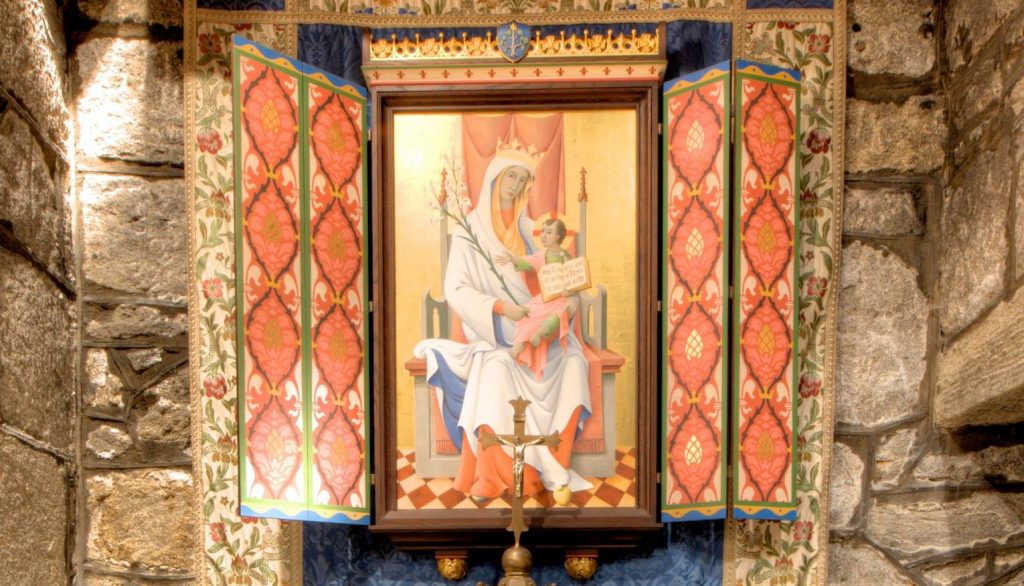
It became the mystery religion of Phoenicia and was spread by the Phoenicians to the ends of the earth. Ashtoreth and Tammuz, the mother and child of these strong adventurers, became Isis and Horus in Egypt, Aphrodite and Eros in Greece, Venus and Cupid in Italy, and in more distant places they bore yet other names. Within 1,000 years, the religion of Babel had become the religion of the world, which had rejected divine revelation.
Tammuz
Linked to the central mystery were innumerable minor mysteries, the hidden meaning of which was known only to the initiates, but whose outward forms were practiced by all men. These included the doctrine of the purifying purification after death, salvation through numerous sacraments (such as priestly absolution), sprinkling with holy water, the offering of round cakes to the queen of heaven (as mentioned in the book of Jeremiah-7: 18; 44:17-25), devotion of virgins to the gods (which was literally sanctified prostitution), the lamentation of Tammuz (see also Ezekiel 8:14) for a period of 40 days prior to the great festival of Istar[4] (who was said to have conceived her son from the dead). It was learned that Tammuz was killed by a wild boar and then brought back to life. An evergreen tree became the symbol of his birth and erected at the time of the winter solstice. Furthermore, the egg was sacred to him because it depicted the mystery of his resurrection.
The sign of the cross was sacred to Tammuz, as a symbol of the life-giving principle and as the first letter of his name. It has been affixed to vast numbers of the oldest altars and temples, and was not, as many suppose, originated in the time of Christianity. From this mystery religion the patriarch Abraham was separated by divine calling. With this same evil worship the people that came forth from him quarreled continually, until under Jezebel, a Phoenician princess, in the time of Ahab they were grafted onto what was left of the religion of Israel in the northern kingdom. Ultimately, it was the cause of their exile. Judah was defiled by it, for Baal worship was only the Canaanite form of Babylonian mysteries, and only by being sent into exile to Babylon itself, Judah was cured of her predilection for idolatry. Baal was the Sun God, the Life-Giving One, identical with Tammuz.
The mystery of lawlessness
When Christ came into this world, the "mystery of lawlessness" was dominant everywhere except where the truth of God as revealed in the Old Testament was known. So when the early Christians began the great task of taking the gospel to the ends of the earth, they were confronted with this system everywhere, in one form or another. For though Babylon as a city had long been but a mystery, her mysteries had not died with her. When the city and the temples were destroyed, the high priest fled with a company of initiates and their sacred objects and images to Pergamos[5][6], where the symbol of the serpent was established as the emblem of the hidden wisdom. From there they crossed the sea and emigrated to Italy, where they settled on the Etruscan plain.
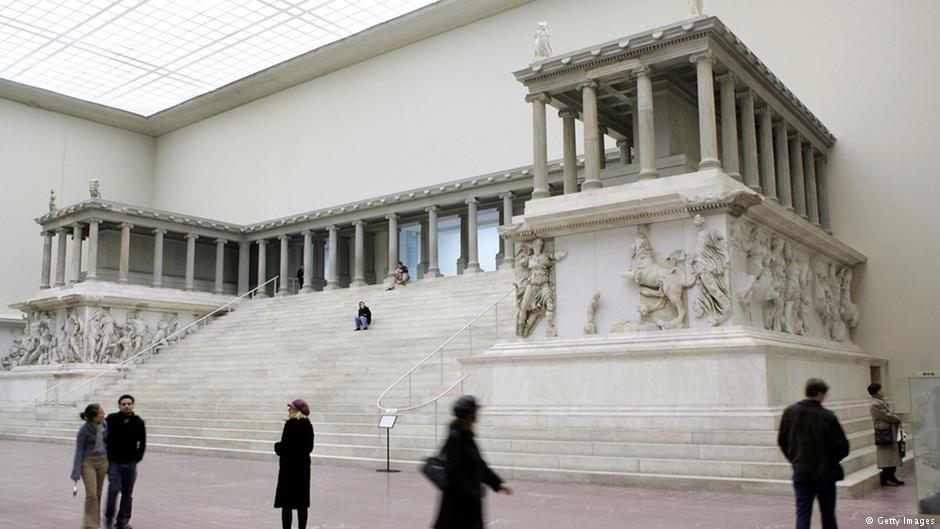
To Rome
There the ancient cult was propagated under the name of Etruscan Mysteries, and Rome eventually became the headquarters of Babylonian life. The chief priests wore fish-headed miters in honor of Dagon, the fish god, the Lord of life. It is another form of the Tammuz mystery as developed among Israel's ancient enemies, the Philistines. The high priest, when he settled in Rome, was given the title Pontifex Maximus, and this title was depicted on his mitre. When Julius Caesar (who was an initiate like all young Romans from good families) had become the head of the empire, he was elected Pontifex Maximus. This title was henceforth held by all Roman emperors down to Constantine the Great, who was both head of the church and high priest to the pagans at the same time.[7], for whom he, like his idolatrous predecessors, wears the fisherman's ring[8].
During the early centuries of the Church's history, “the mystery of lawlessness” (2 Thessalonians 2:7) had astonishing effects. Babylonian practices and teachings were so absorbed by what called themselves "Church of Christ" that the truth of the Scriptures was completely obscured on many points, while idolatrous practices were forced upon the people as Christian sacraments and pagan philosophies took the place of gospel teaching. Thus was born that amazing system that dominated Europe for a thousand years and made commodities of “bodies and souls of men” (Revelation 18:13), bringing a measure of liberation until the great Reformation of the 16th century.
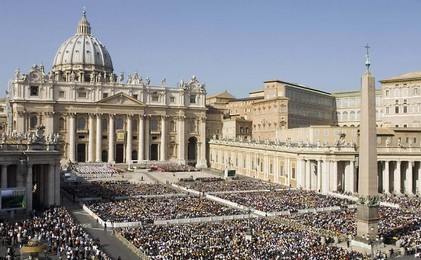
Today (August 2020) you can also find the same story on the site of the Evangelical Bible Translation: From Nimrod via Tammuz to the woman Babylon
Below is the same story again briefly by John Barnett of DTBM for those who understand English (the English text is there to read).
[1] Translation of the article on http://www.biblelineministries.org/articles/basearch.php3?action=full&mainkey=BABYLONIAN+RELIGION+%28By+Harry+A.+Ironside%29
[2] https://nl.wikipedia.org/wiki/Semiramis_(koningin);
[3] https://nl.wikipedia.org/wiki/Justinus_de_Martelaar
[4] https://nl.wikipedia.org/wiki/Isjtar_(godin)
[5] The Istar gate from Pergamus was recreated in the last century in the Pergamus museum in Berlin. See https://nl.wikipedia.org/wiki/Pergamonmuseum.
[6] See also Revelation 2:12-17, where it is said that in Pergamos is the 'throne of Satan' and that Satan dwells there.
